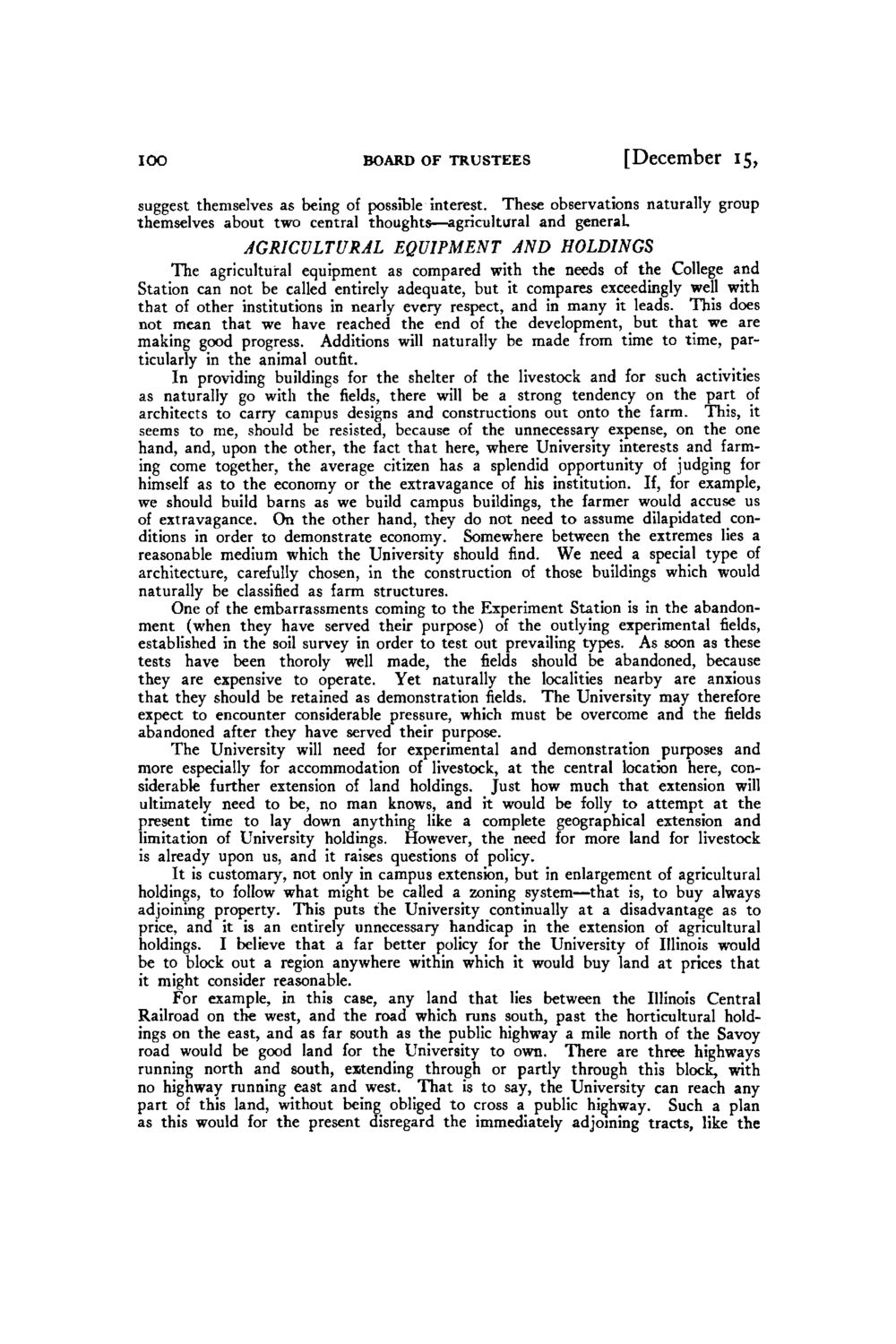| |
| |
Caption: Board of Trustees Minutes - 1924
This is a reduced-resolution page image for fast online browsing.

EXTRACTED TEXT FROM PAGE:
IOO board of trustees [December 15, suggest themselves as being of possible interest. These observations naturally group themselves about two central thoughts—agricultural and general. AGRICULTURAL EQUIPMENT AND HOLDINGS The agricultural equipment as compared with the needs of the College and Station can not be called entirely adequate, but it compares exceedingly well with that of other institutions in nearly every respect, and in m a n y it leads. This does not mean that w e have reached the end of the development, but that w e are making good progress. Additions will naturally be made from time to time, particularly in the animal outfit. In providing buildings for the shelter of the livestock and for such activities as naturally go with thefields,there will be a strong tendency on the part of architects to carry campus designs and constructions out onto the farm. This, it seems to me, should be resisted, because of the unnecessary expense, on the one hand, and, upon the other, the fact that here, where University interests and farming come together, the average citizen has a splendid opportunity of judging for himself as to the economy or the extravagance of his institution. If, for example, w e should build barns as w e build campus buildings, the farmer would accuse us of extravagance. O n the other hand, they do not need to assume dilapidated conditions in order to demonstrate economy. Somewhere between the extremes lies a reasonable medium which the University should find. W e need a special type of architecture, carefully chosen, in the construction of those buildings which would naturally be classified as farm structures. One of the embarrassments coming to the Experiment Station is in the abandonment (when they have served their purpose) of the outlying experimental fields, established in the soil survey in order to test out prevailing types. As soon as these tests have been thoroly well made, the fields should be abandoned, because they are expensive to operate. Yet naturally the localities nearby are anxious that they should be retained as demonstration fields. The University m a y therefore expect to encounter considerable pressure, which must be overcome and the fields abandoned after they have served their purpose. The University will need for experimental and demonstration purposes and more especially for accommodation of livestock, at the central location here, considerable further extension of land holdings. Just h o w much that extension will ultimately need to be, no m a n knows, and it would be folly to attempt at the present time to lay down anything like a complete geographical extension and limitation of University holdings. However, the need for more land for livestock is already upon us, and it raises questions of policy. It is customary, not only in campus extension, but in enlargement of agricultural holdings, to follow what might be called a zoning system—that is, to buy always adjoining property. This puts the University continually at a disadvantage as to price, and it is an entirely unnecessary handicap in the extension of agricultural holdings. I believe that a far better policy for the University of Illinois would be to block out a region anywhere within which it would buy land at prices that it might consider reasonable. For example, in this case, any land that lies between the Illinois Central Railroad on trie west, and the road which runs south, past the horticultural holdings on the east, and as far south as the public highway a mile north of the Savoy road would be good land for the University to own. There are three highways running north and south, extending through or partly through this block, with no highway running east and west. That is to say, the University can reach any part of this land, without being obliged to cross a public highway. Such a plan as this would for the present disregard the immediately adjoining tracts, like the
| |